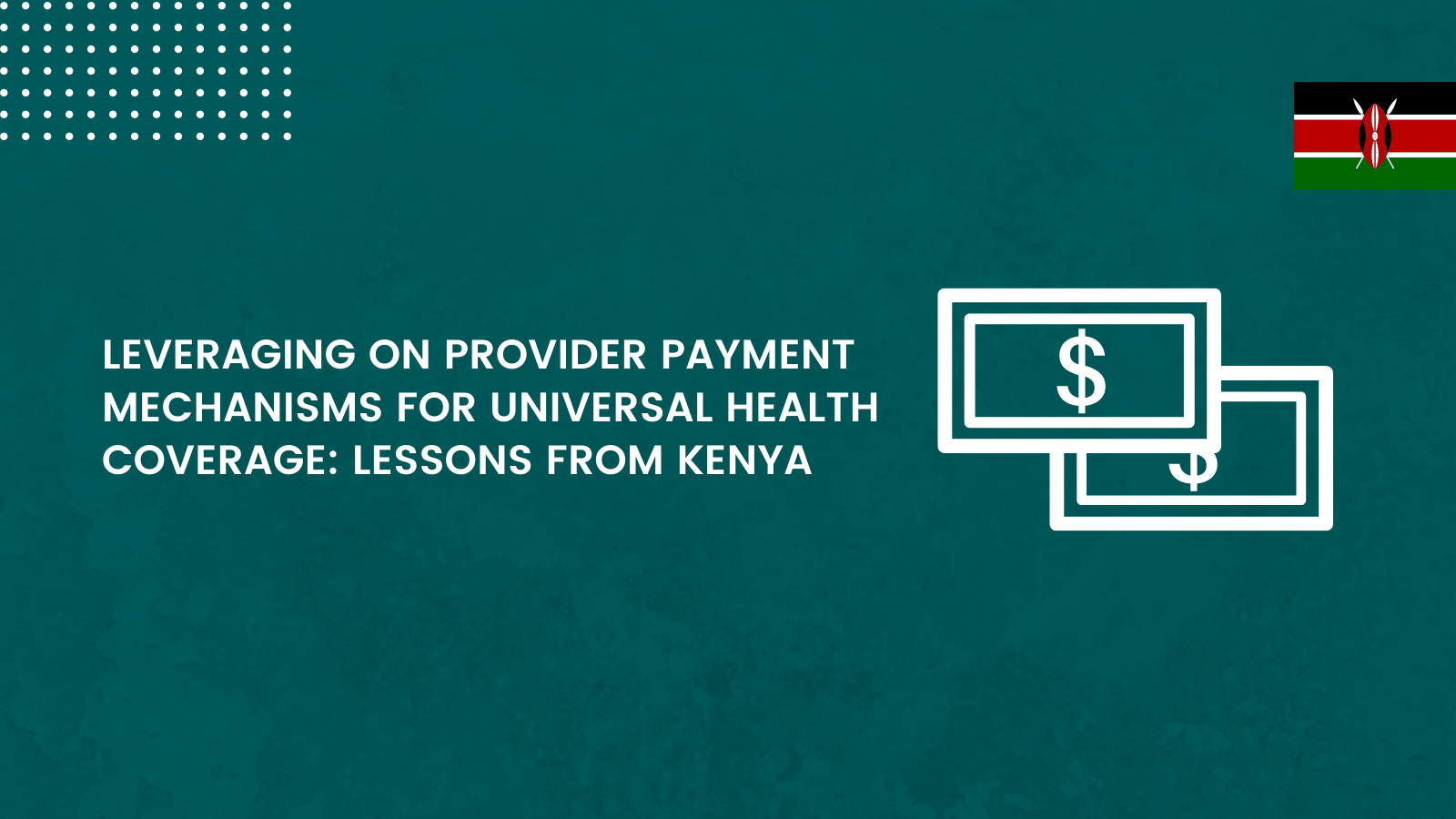Globally, countries are increasingly reforming their health systems as efforts to achieve universal health coverage (UHC) intensifies. Although system-wide health sector reforms are required, especially in developing countries, there is increasing evidence for prioritization of purchasing reforms, especially provider payment mechanisms (PPMs). PPMs – the methods used by purchasers to reimburse healthcare providers to deliver services – are essential given that they send signals to providers that can elicit a positive or negative response which directly affects the access, quality and cost of healthcare services. In low- and middle-income countries such as Kenya, the undesired responses are particularly quintessential given that less than 20% of the population is covered with any form of health insurance, 35.5% lives below the international poverty line, and available facilities contracted by the National Hospital Insurance Fund (NHIF) are largely pro-urban. This blog presents some insights on provider payment mechanisms from a recent review on the progress and gaps in strategic Health purchasing in Kenya.
Progress in PPMs in Kenya: Purchasers in Kenya have adopted a mix of PPMs to leverage their complementary strengths. For instance, the NHIF pays providers on a capitation basis for outpatient services and uses fee for diagnostic services such as radiology. The Ministry of Health (MOH) uses global budgets for the vertical programmes and the national referral hospitals it manages. In contrast, the County Department of Health (CDOH) uses line-item budgets for commodities and salaries, as well as a fee for service for counties with their universal health coverage plans, e.g., Makueni (Table 1).
Table 1: List of purchasers and their PPMs in Kenya
| Purchasers | Who they purchase from | What they purchase | How they purchase |
| National Government/Ministry of Health (MOH) | National Referral hospitals | Essential package for health | Global Budgets |
| County departments of health (CDOH; n=47) | County public facilities | Essential package for health | Inputs (e.g., salaries, fuel, human resources) are paid for on a line-item basis within programme budgets |
| National Hospital Insurance Fund (NHIF) | Public and private facilities | Outpatient and inpatient services based on the benefits package for the scheme | Capitation for outpatient, case-based payments (e.g., for surgeries or renal dialysis), fee for service (e.g., for diagnostic procedures) |
| Private health insurers | Private, and international health providers | Outpatient and inpatient services based on package paid for by each member | Fee for service |
| Community-based health insurers (CBHI) | Low-cost public and faith-based providers | Outpatient and inpatient services based on package paid for by each member | Fee for service |
Gaps in PPMs in Kenya: First, even though purchasers in Kenya have adopted a mix of PPMs, evidence from the review indicated that these are often poorly designed, poorly implemented and do not have adequate measures to guard against fraud/corruption. For instance, the NHIF’s implementation of capitation for outpatient services has experienced challenges including lack of adequate knowledge about its design among providers, which is partly due to/associated with poor involvement of the providers at the design stage, lack of rate negotiation and revision, and inadequate mechanisms to guard against adverse consequences such as fraud by providers. For example, reports indicate that capitation rates have not been revised since their introduction in 2015. Besides, county officials and development partners have highlighted inadequate involvement in developing PPMs in Kenya due to a lack of transparency on PPM design processes followed by payers, especially NHIF.
Second, we found that purchasers (particularly NHIF) have different payment rates for the same services across different schemes. For instance, for normal delivery for members in public facilities, the NHIF pays KES 10,000 (USD 100) under the general scheme but pays KES 5,000 (USD 50) under the free maternity scheme. This fragmentation sends different signals to providers that may hinder equity, efficiency and quality of services provided. Furthermore, existing evidence shows that payments are often unpredictable both in amounts and timeliness which influences provider behaviour and impacts patients access to services. For instance, providers have been shown to underprovide services when paid using capitation but overprovide under a fee-for-service payment mechanism.
While PPMs are a crucial reform area, their design and implementation in Kenya offer several lessons for accelerating progress towards UHC in Kenya and similar settings. First, the development of the PPMs should be transparent, evidence-based and include all relevant stakeholders, particularly providers. Actively engaging all stakeholders will enhance the effective provider-payer relationship by building trust, knowledge and obtaining buy-in among stakeholders. Where feasible, purchasers should raise awareness about the development and revision of PPMs with clear timelines for future reviews. Second, purchasers should harmonise the provider payment rates across different schemes to avoid the mixed signals that the current provider payment arrangements send to providers. One way is to standardise rates for similar procedures across the different schemes and incorporate transparent and timely reviews. Third, purchasers should link the PPMs to outputs with clear incentives for providers to achieve set targets. Linking payment arrangements to outputs, for instance, quality, is essential for achieving UHC.
AUTHORS

Jacob Kazungu is a Health Economist and Research Officer in the Health Economics Research Unit at the KEMRI-Wellcome Trust Nairobi programme. His current research focuses on health financing, equity analysis in healthcare, economic evaluation of healthcare interventions, the economics of sex work and using stated and revealed preference methods to improve health systems in Kenya and Sub-Saharan Africa.

